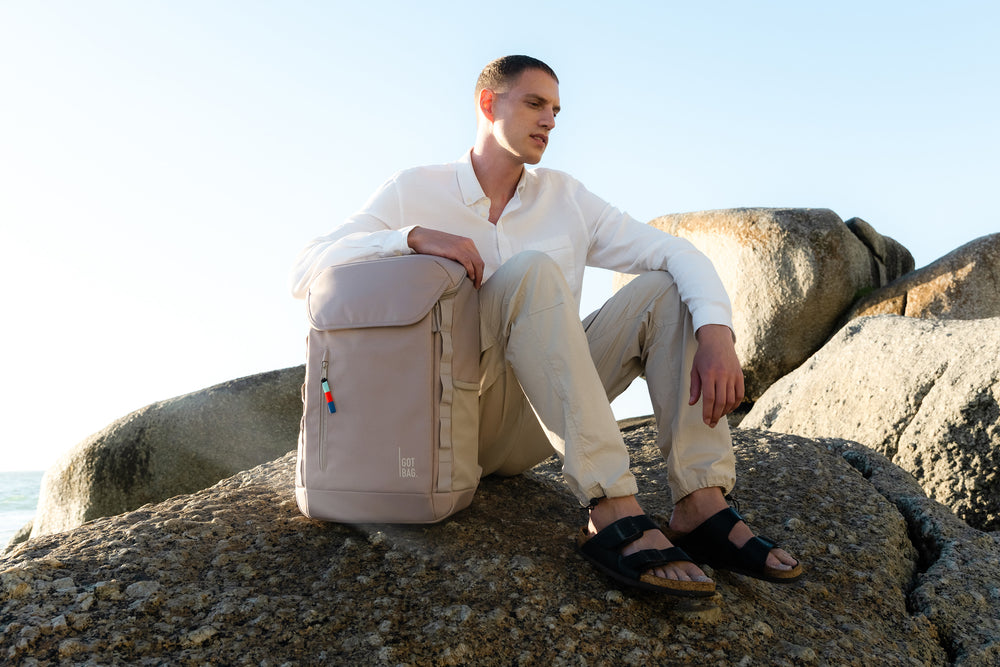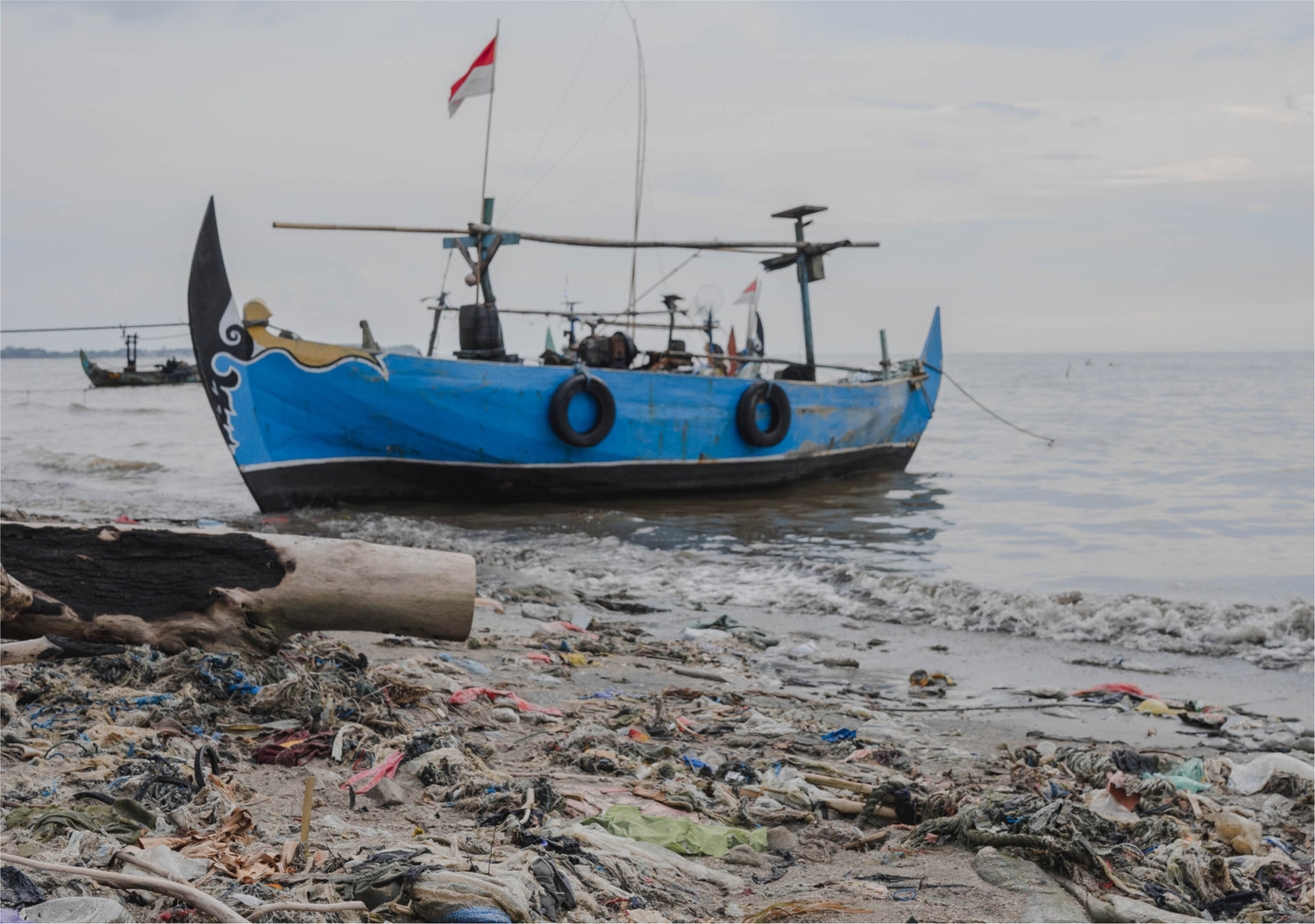The ocean, which covers over 70% of our planet, is home to countless species and supports human life in many ways. However, our oceans are under threat, not least from the growing threat of plastic pollution. Among the various types of pollutants, plastic debris in the ocean has gained significant attention due to its detrimental effects on marine ecosystems. Cleaning up this man-made tragedy is an obvious challenge that people are aware of - and collecting plastic waste from the ocean has been part of our brand identity from the beginning. But it's not the solution to this crisis.
Tackling ocean plastic pollution from the shore
To break the vicious cycle of ocean plastic pollution, we need to address the roots of the problem and find solutions that prevent plastic waste from entering the oceans in the first place - or the story will continue forever. Our clean-up program in Indonesia not only collects plastic waste as bycatch from our network of fishermen but also plastic waste on land that would otherwise end up in the ocean. You may have heard of Ocean Bound Plastic, a term of the industry that was defined by a certification program of the same name. Our definition of Ocean Impact Plastic aligns with Ocean Bound Plastic, and we’re currently working on this certification. To describe the type of plastic we collect with a tangible term we created the name Ocean Impact Plastic.
Understanding Ocean Impact Plastic
Ocean Impact Plastic refers to any plastic waste that has or is likely to have a negative impact on the ocean. This includes plastic waste that has already found its way into the ocean, but also plastic waste from coastal areas in the environment or from households without waste disposal systems that would otherwise end up in the ocean. Environmental waste can easily be carried into the ocean by factors such as rain, wind, flooding, and rivers that carry the material into marine areas. We adhere to a collection policy within 50 km of the coast, in line with Ocean Bound Plastic Certification standards, but our focus is sharper: our current collection efforts are focused on a maximum distance of 10 km from the coastline. Approximately 85% of our clean-up program's collection comes from coastal areas and 15% is recovered directly from the ocean. Plastic waste floating in the ocean has been battered by the sun and the sea. It often bears the scars of degradation, making it difficult to recycle. However, our proximity to the shore during collection means that the materials have not been in the water for a long time and are therefore less exposed to these harsh elements, resulting in less damage and contamination. This allows our recycling partner to process the material more effectively.
The composition of Ocean Impact Plastic
Approximately 15% of the Ocean Impact Plastic collected in Indonesia is PET. We use this PET to make fabric for our products, along with additional Ocean Bound Plastic certified PET pellets sourced from our recycling partner and their network of plastic collections, which meets our definition of Ocean Impact Plastic. But we're not taking the easy way out with our clean-up program in Indonesia: Because plastic waste in the environment and from households is not just PET, but a variety of different types of plastic. We collect not only PET bottles, but any type of plastic to increase our impact. For other materials we collect, we are constantly looking for reasonable recycling solutions. However, the truth is that, like any other common mix of plastic waste, much of it is unfortunately not recyclable. But that's a story for another day.
Collecting Ocean Impact plastic through our clean-up program is just one piece of the puzzle. To effectively tackle plastic pollution, we need a multi-faceted approach that includes prevention, education, innovation, and collaboration. From individual choices to global policies, everyone has a critical role to play. With a continued commitment to reducing the plastic footprint, dedication to clean-up programs, and advancements in recycling technology, we believe that people can make a tangible impact on the health of our oceans and the creatures that depend on them.








